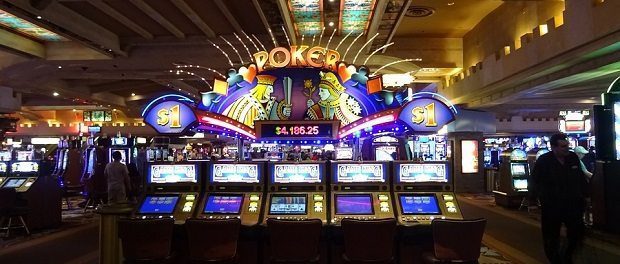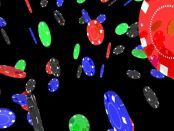Sell Sell Sell! Put it all on number nine (each way). Invest in pork futures or blow it all in Vegas.
There’s always been a similarity between business investment and straight-up gambling.
Alternatively, you could always take the Donald Trump guaranteed approach to making a small fortune in business….
Start with a large fortune.
One person’s risky bet is another’s exciting opportunity.
The difference between those outlooks comes down to more than just disposition: It turns out that people with a stronger connection between two brain regions have a more cautious financial outlook.
“Activity in one brain region appears to indicate ‘uh oh, I might lose money,’ but in another seems to indicate ‘oh yay, I could win something,'” said Brian Knutson, associate professor of psychology. “The balance between this ‘uh oh’ and ‘oh yay’ activity differs between people and can determine the gambling decisions we make.”
Researchers have tracked activity in those two brain regions – known as the anterior insula and nucleus accumbens – for the past decade, but Knutson was curious how the two work together. Are they directly connected, or do they both influence a different brain region that makes the ultimate decision?
Knowing this could help scientists and policymakers who want to better understand risky decision-making in the context of gambling and addiction and develop more effective interventions.
Knutson’s team employed a technique developed at Stanford that identifies tracts of neurons that connect brain regions and measures the strength of those connections in terms of how well insulated they are.
Using that technique, called diffusion-weighted MRI, Knutson and graduate student Josiah Leong found a tract that directly connects the anterior insula and nucleus accumbens – something that had been seen before in animals but never in humans.
What’s more, they found that the thicker the sheath of fatty tissue insulating the bundle – an indicator of the strength of the connection – the more cautious the study participants’ decisions were in a gambling test. The neuronal connection appears to be a conduit for the more cautious brain region to dampen activity in the more enthusiastic region.
“Most people love the small chance of a huge win,” Knutson said. “But people vary. Some people really, really like it. But people who have a stronger connection don’t like it as much.”
Magnetic gambling den

In the study published Jan. 6 in the journal Neuron, the researchers gave each participant $10 that they could gamble, or not, in a series of games with different odds. The participants got to keep any money left at the end of the experiment.
Money in hand, participants entered an MRI chamber where they could see a roulette wheel and the odds for winning or losing. In one bet, they might have equal odds to win or lose $3. In another, they might have higher odds of winning a small amount and small odds of losing a lot or vice versa.
As the participants weighed the various gambles, the researchers tracked activity in the two brain regions. The team noticed that all gamblers – even the cautious ones with a well-insulated connection – would sometimes place risky bets. And when they did, the more cautious region stayed quieter while the enthusiastic region grew more active.
“We could predict the person’s upcoming bet based on the balance of activity in these regions,” said Knutson, who is also a member of Stanford Bio-X and the Stanford Woods Institute for the Environment.
The stronger, better insulated the connection between the regions, the less likely it was that the enthusiastic region would become active at the prospect of a large but unlikely win.
Knutson said that finding the connection between the two regions won’t immediately lead to new interventions for people with gambling problems or other issues relating to risky choices, but it does provide a starting point for studying interventions.
“Now we can start asking interesting questions about impulse control and gambling,” Knutson said. “For example, does the connection change over the course of therapy?”
Anything that strengthens the connection might potentially help people reduce risky decisions, whether in gambling, drug addiction or other potentially risky behaviors.
Knutson is a leader of the NeuroChoice initiative, part of the Stanford Neurosciences Institute, that has a goal of both understanding the brain regions and pathways involved in how people make choices and working with colleagues in public policy, law, business and education to apply those findings in the real world.
“This finding is a step toward achieving some of the goals we set out in NeuroChoice,” Knutson said.
Source: Eurekalert/Stanford University

Some of the news that we find inspiring, diverting, wrong or so very right.



















